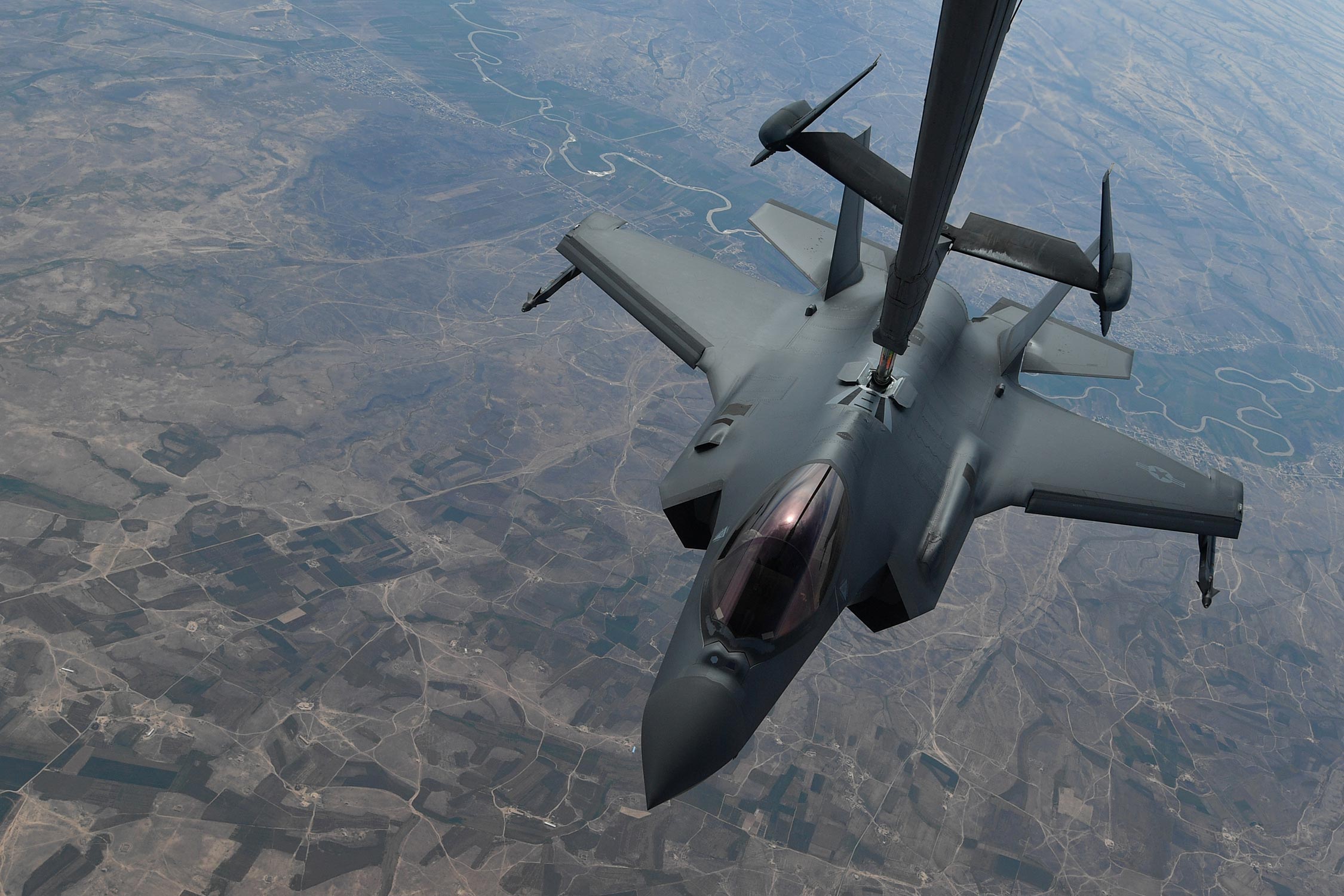In what it described as the largest combined operation since the March capture of Baghuz, Islamic State’s last bastion in eastern Syria, the Coalition said CJTF-OIR and Iraqi forces on April 24 attacked ISIS sleeper cells in northern Iraq.
Separately, in the first acknowledged combat employment of the aircraft by the U.S. military, two U.S. Air Force F-35A joint strike fighters conducted an airstrike in the same area on April 30.
Combined attack in Hamrin
“Combined Joint Task Force – Operation Inherent Resolve supported an Iraqi Counter-Terrorism Service attack on Daesh sleeper cells and its support base in the Wadi Ashai area of northern Iraq on April 24” the Coalition said in an April 30 release.
Wadi Ash Shai is in the Hamrin mountains in northern Iraq “in an area where Daesh is generally believed to be moving materiel and people in an attempt to support its resurgent operations,” the release said.


“CJTF-OIR destroyed multiple Daesh tunnel systems, buildings, caves, and command and control positions in preparation for Counter Terrorism Service clearance operations,” the release said, adding that the operations “also removed several Daesh fighters from the battlefield.”
Jets from the U.K.’s Royal Air Force appear to have been involved in the aerial operation. Two Typhoon multirole jets were assigned to attack six entrances to a “dispersed Daesh network of caves and tunnels in the hills some forty miles east-north-east of Tikrit” on April 24, the Ministry of Defence said in an April 29 release, adding that “Paveway IV guided bombs were once again successfully employed by our aircraft in carrying out this mission.”
Video was released of one airstrike.
The video shows “April 21” as the filming date but it is listed on the U.S. military’s Dvids service as April 24 and April 25. The Defense Post has contacted the Coalition for clarification.
“The clearance of the Middle Euphrates River Valley in March represented a substantial loss for Daesh, but it was not the end,” said Major Gen. Christopher Ghika, Deputy Commander-Stability for CJTF-OIR. “The CTS have dealt a major blow to Daesh’s ambitions; and with this strike, they lose even more of their capacity to destabilize Iraq.”
First F-35 combat employment by the U.S. military
Two U.S. Air Force F-35A Lightning II aircraft conducted an airstrike at Wadi Ash Shai, Iraq, in support of CJTF-OIR on April 30, U.S. Air Forces Central Command said in a release.
“The F-35As conducted the airstrike using a Joint Direct Attack Munition to strike an entrenched Daesh tunnel network and weapons cache deep in the Hamrin Mountains,” the release said.
F-35As joined the Combined Forces Air Component team in the U.S. Central Command area of operations on April 15, the aircraft’s third deployment and its first to the CENTCOM area of responsibility.
Later on April 30, ISIS claimed three personnel including a commander were killed and two others injured when its fighters struck a joint Iraqi Federal Police and Hashd al-Shaabi (Popular Mobilization Units) militia foot patrol with an explosive device in the al-Fatha area of Hamrin on April 29.
The announcements come a day after ISIS released a video featuring leader Abu Bakr al-Baghdadi, his first appearance in five years.


